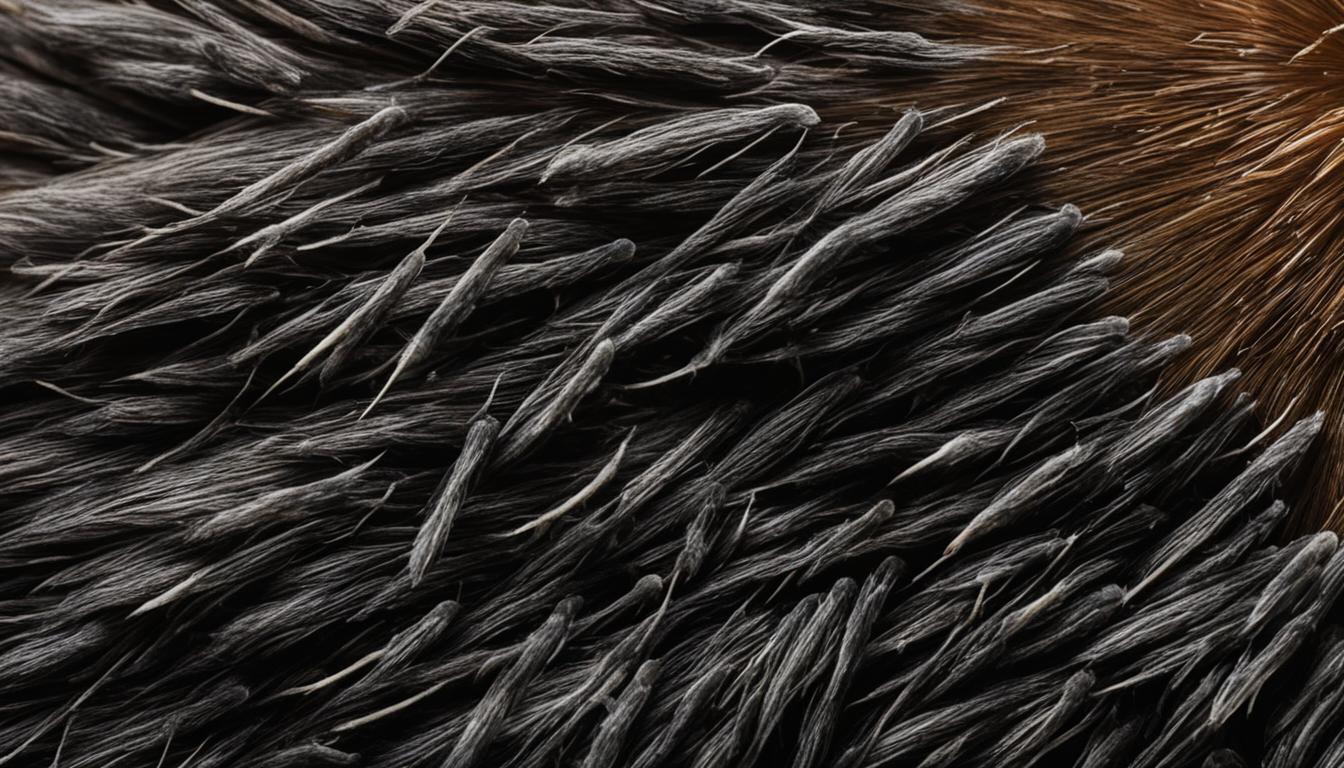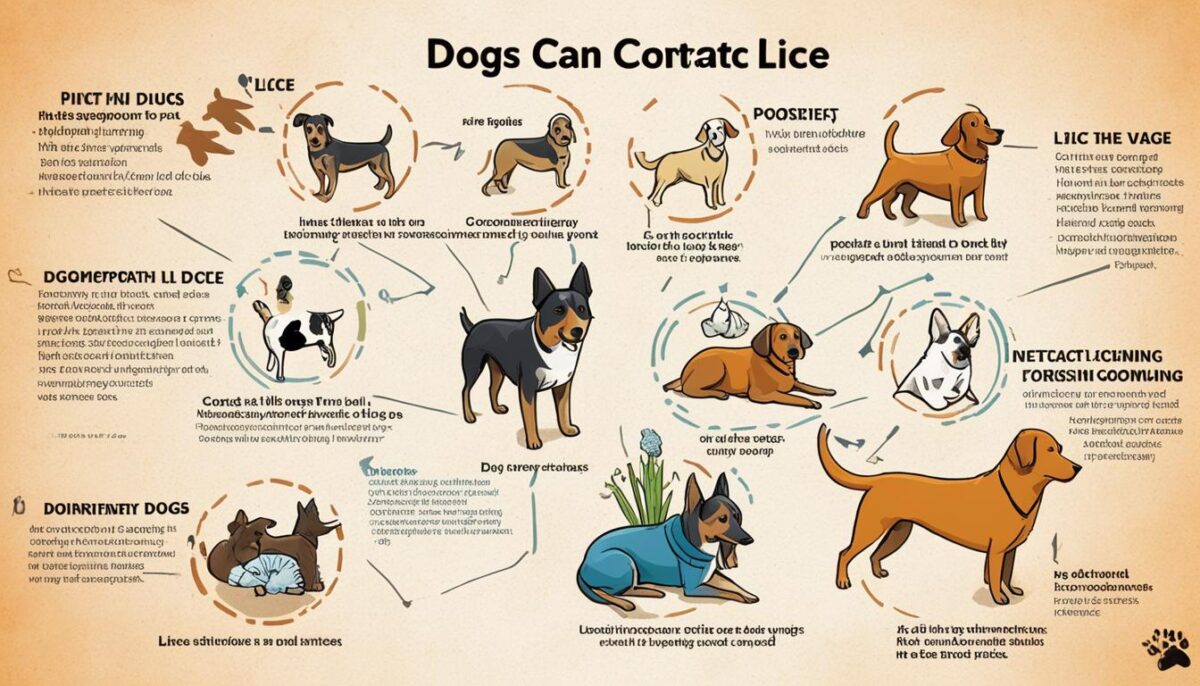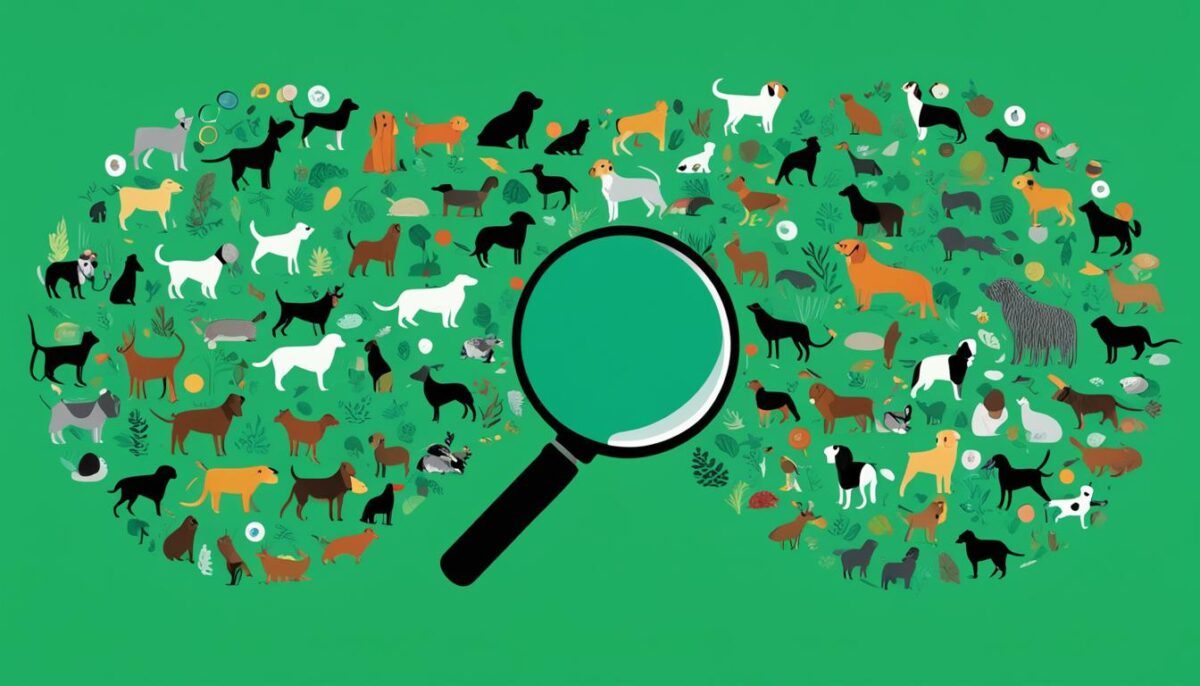You love your dog. They are a big part of your family. You might worry if your dog can give you lice, or if you can give lice to your dog. Guess what? You don’t need to worry! Lice that live on dogs do not like to live on humans. And the lice that can be on people do not go to dogs. This means you can’t get lice from your furry friend. And they can’t get it from you! Lice like to stay with their own kind. Dog lice like dog blood and human lice need human blood. So, if your dog has lice, it’s okay. You won’t catch it from them.
Key Takeaways
- You and your dog have different kinds of lice.
- Human lice need people, and dog lice need dogs.
- Don’t worry about getting lice from your dog.
- Those little bugs are picky. They only like the blood that is just right for them.
- Caring for your dog’s hair can help stop lice.
- Keep loving and playing with your dog. Your lice won’t pass back and forth.
- Have fun with your pet without any lice worries!
Debunking the Myth: Can a Human Get Lice from a Dog?
Hey there! Have you ever wondered if you could get lice from your furry dog friend? Well, we’ve got good news for you! The type of lice that dogs may have cannot survive on human blood. So, even though it’s a common worry, there’s really no need to stress about pet-to-human lice transmission. You and your dog live in different worlds when it comes to these little critters.
It’s just a big story, a myth, that people can get lice from dogs. These pesky myths can make you worry about something that just isn’t true. While lice certainly are unwanted guests, they are very picky and stick to their own kind. Your dog will not catch lice from you, and you won’t catch them from your dog. This fact should put your mind at ease as you play and cuddle with your four-legged pal!
Lice sure are a concern when it comes to keeping your pet healthy, but you don’t have to worry about them jumping ship to humans. Let’s bust those lice myths with some cold, hard facts:
| Dog Lice | Human Lice |
|---|---|
| Lice that like dog blood | Lice that need human blood |
| Cannot live on other animals | Cannot live on pets |
| Won’t cause itching in humans | Are not interested in animal blood |
| Picked up from other dogs | Spread person to person |
Understanding this will hopefully clear up any parasite concerns you might have. Just remember, you’re safe from catching lice from your pup, and they’re safe from catching lice from you. Love your pet without fear and keep both of you happy and healthy!
Understanding Species-Specific Parasites
When it comes to critters that make your dog itch, you’ve probably heard about species-specific parasites. This means they’re picky about who they live on. So, for our furry pals, dog lice information is super important to keep them happy and itch-free!
What Are Dog Lice?
Imagine bugs so tiny you almost can’t see them. Dog lice are exactly that. These insects have six legs with nifty hooks to cling onto your pup’s fur. They love dining on your dog’s skin flakes and, yuck, even their blood. But no worries, they can’t do the same to you because they only hold onto fur or feathers from their special animal buddies.
Chewing Lice vs. Sucking Lice
There are two types of these itchy invaders. First up are the chewing lice. You can spot them because they’ve got wide heads and love to chow down on skin and all the tasty oils your dog makes. Then you have the sucking lice. Their pointy mouths are like tiny straws to sip blood from your pooch. These critters are super good at sticking to the kind of snacks they like best, which is why they stay on dogs and not on you.
So, if your dog keeps scratching, be an ace pet detective! Look closer for these crawly dog parasites and remember, they don’t want to bug anyone but their doggy host.
Identifying Lice on Your Dog
Do you think your dog might have lice? It’s important to spot these little bugs early. Adult lice on dogs are about the same size as a sesame seed, which is pretty big when you’re looking for them in your dog’s fur. Unlike fleas, they are not very dark. You might see your dog scratching more than normal. Their fur could feel dry and they might be losing hair in spots. Another sign is if you see tiny white bits that stick to the hair. These might look like flakes, but they could be lice eggs.
Lice that live on dogs like to lay their eggs, which are called nits, right on the dog’s hair. If your furry friend has these, they might be dealing with lice symptoms. Let’s look at some common signs:
- Lots of scratching or itching
- Dry, rough fur
- Loss of hair in some areas
- Small white grains that look like dandruff but stick to the fur
If you notice any of these things, it might mean your dog has lice. You can learn more about what to look for with this helpful table of symptoms:
| Symptom | What You Might See or Notice |
|---|---|
| Scratching | Your dog scratching often, especially around the head, neck, and tail. |
| Dry Fur | Fur seems dull, brittle, and breaks easily. |
| Hair Loss | Patches where hair is thin or gone completely, usually where they have scratched a lot. |
| ‘Dandruff’ that Sticks | White specks, like dandruff, but they don’t shake off. These could be lice eggs. |
Remember to keep an eye on your dog and check their fur often for these signs. If you think your dog has lice, tell your family so you can help your dog together.
Seeking the Source: How Do Dogs Contract Lice?
Think of dog lice as tiny bugs that don’t like to hop or fly. Instead, they crawl very slowly. So, your furry friend must get really close to another dog that has lice to catch them. Imagine places like a cozy dog bed, a favorite collar, or the brush used for grooming; these are hotspots for lice transmission in dogs, especially if they’ve been shared with other dogs.
But how exactly do these pesky critters make a new home on your dog? Let’s dig into contaminated bedding and other common ways your dog might end up with lice.
Direct Contact and Contaminated Environments
Lice love to stay where they feel at home. They move from one doggy pal to another during playtime or cuddles. This means your dog could also get lice by lying on contaminated bedding, playing with an infected dog’s toys, or even when using the same grooming tools. Parks, kennels, and daycare spots can be places where your dog might come into contact with these uninvited guests.
The Life Cycle of Dog Lice
The life cycle of lice begins when a mommy louse lays her tiny eggs (you might also hear them called ‘nits’) on your dog’s hair. These eggs are super sticky, so they stay attached. After about a week, they hatch into something called a nymph. It’s like a mini-version of an adult louse.
In another week or so, these nymphs mature into adult lice, and that’s when they can start laying eggs too. This lice reproduction can happen very quickly, which is why it’s important to stop lice as soon as you see them. The journey from egg to adult lice is short, making their ability to spread and multiply quite remarkable.
Effective Lice Eradication in Dogs
Fighting off those tiny, itchy pests on your dog doesn’t have to be hard. Preventing and treating dog lice is all about knowing what to do. Let’s get your furry friend lice-free with some simple steps!
First, you want to stop lice from even thinking about jumping onto your dog. That means using flea and tick preventives regularly. These can keep lice away before they can make your dog scratch. But, if lice still find a way onto your buddy, don’t worry, there are ways to whisk them away.
Comb through that fur with a flea comb. It’s a fine-toothed tool that can pull those lice and their eggs out. If the fur’s all tangled and matted, sometimes shaving the hair is the best fix. And don’t forget, special medicated shampoos made just for lice can knock them out during bath time.
Remember though, the same stuff that’s safe for dogs might not be safe for other pets, like your cat. So it’s a good idea to talk to your vet before using any treatments. They’ll know exactly what’s best for your pet family.
Cleaning is key too. Make sure to wash and clean all the things your dog likes to lay on or play with. This helps to make sure no lice stick around or come back for a surprise visit.
- Use flea and tick preventives consistently for lice prevention in dogs.
- Look at those lice closely with a flea comb.
- For rough hair, a shave might be the way to go.
- Special shampoos are like a bath-time lice magic potion.
- Check with your vet before you start any treatment.
- Clean everything! Beds, toys, collars – lice hate a clean house.
Doing all this will make sure your dog stays happy, healthy, and lice-free. You got this!
Dispelling Worries: Human and Animal Lice Differences
Lice are little bugs that can make you itch. But the lice on people are not the same as the lice on cats and dogs. Let’s find out why these bugs stick to certain animals and clear up some silly stories about lice that just aren’t true.
Cats, Dogs, and Human Lice: The Survival Requirements
To stay alive, lice need to eat and live in the right kind of hair. People lice like to stay warm and cozy on our heads. On the other hand, dog lice need dog hair to cling to because their little legs are made just right to hang onto dog hair, and they need dog blood to eat. The same goes for cat lice. They all need their special food and place to live, which is why dog lice cannot live on people.
Common Misconceptions About Lice Transmission
Some folks think that if your pet has lice, your kids might get it, too. Or they think that the lice can move from one kind of animal to another. But that’s not how it works. People lice stick with people, and animal lice stick with their own kind. It’s important to know this: If you see lice on your kid’s head or on your dog, they didn’t get it from each other.
| Human Lice | Dog Lice | Cat Lice |
|---|---|---|
| Need human blood | Need dog blood | Need cat blood |
| Live in human hair | Cling to dog hair | Cling to cat hair |
| Can’t live on pets | Can’t live on humans or cats | Can’t live on humans or dogs |
When we understand lice better, we don’t have to worry about them so much. Remember, lice survival depends on them being on the right kind of animal and they cannot switch from one to another. Now you know the difference between human and animal lice, and you can see that those stories about lice transmission are just myths.
Comprehensive Pet Care to Prevent Lice Infestations
Everybody loves a clean and happy dog! And guess what? Keeping your dog clean is a super good way to make sure tiny bugs called lice don’t make your furry friend itchy. By taking care of your dog’s pet hygiene, you can help prevent lice in dogs, making sure they are feeling great and bug-free!
Better Hygiene Practices for Pets
Think about how great you feel after a bath and clean clothes. Dogs love that feeling too! Here’s how you can help:
- Give your dog a bath with shampoo that’s just for them.
- Keep their bed super clean by washing it regularly.
- After playtime outside, check them for any crawly bugs.
Importance of Regular Grooming and Cleaning
When you brush your dog’s fur and keep their teeth clean, not only do they look awesome, but it also keeps them healthy. Let’s see some things you can do:
- Brush your dog’s hair to keep it knot-free and tidy.
- Even their toys need a good scrub, so don’t forget!
- Create a clean living environment where your dog can play and sleep safely.
Check out this table to remember the regular pet grooming steps:
| Grooming Step | Why It’s Important | How Often |
|---|---|---|
| Baths | Keeps skin and fur clean | Once a month or as advised by your vet |
| Brushing Fur | Removes dead hair and dirt | Several times a week |
| Cleaning Ears | Prevents infections | Every week |
| Trimming Nails | Keeps paws comfy for walking | Every month |
By keeping your dog’s spot sparkling and taking care of their fur, you’re making a big difference. They’ll have a smaller chance of getting those unwanted little lice and be the happiest pup on the block!
Conclusion
We’ve learned quite a bit about lice, haven’t we? The little bugs that might bug our pets don’t want to bug us, and that’s good news. Dogs have their own kind of lice, and so do humans. They’re different, so you don’t have to worry about catching lice from your dog or giving them yours. It’s all about each bug sticking to where they belong. You take care of you, and we’ll make sure to take care of our furry friends to keep them free from lice.
Key Takeaways on Lice Transmission Between Dogs and Humans
Now, here’s what you should remember: lice are picky. They stick with who they like, which means dog lice stay on dogs and human lice stay on humans. So even if those pesky lice do visit, your family and pets won’t be passing them around. This bit of lice education helps in preventing pet lice transmission and keeps everyone at ease.
Final Thoughts on Pet Health and Hygiene
Keeping your dog’s space clean and giving them lots of love makes a big difference in pet health. A clean, happy home is the best tip for lice prevention. So, keep up with the good work of loving and caring for your pet. Clean pets are happy pets, and they add so much joy to our lives!
FAQ
Can humans get lice from dogs?
No, humans cannot get lice from dogs as lice are species-specific parasites. Dog lice need dog blood to survive and cannot live on human blood.
What are the differences between chewing lice and sucking lice on dogs?
Chewing lice feed on skin and secretions and have wide heads, while sucking lice prefer to feed on blood using their pointed mouthparts. Both types are adapted specifically to live on dogs.
How can you spot lice on your dog?
Lice on dogs are about the size of a sesame seed and are lighter in color than fleas. Signs of lice include excessive scratching, dry fur, hair loss, and what looks like dandruff that is actually lice eggs.
How do dogs contract lice?
Dogs can get lice through close contact with other dogs that have lice, as well as from contaminated environments such as bedding, collars, or grooming tools. Lice do not jump or fly; they crawl from one dog to another.
Can my pet get lice from the park or daycare?
Yes, if other dogs with lice have been in the same spaces such as parks or daycares, your dog may contract lice from these environments through direct contact or contaminated surfaces.
What is the life cycle of dog lice?
Dog lice begin as eggs glued to the dog’s hair. They hatch into nymphs and, after about two weeks, mature into adults. The entire life cycle from egg to adult takes around one month.
What treatments are available for lice on dogs?
Treatments for dog lice include regular flea and tick preventives, flea combs, shaving matted hair, or using special shampoos. Consult your vet first, especially when you have other pets like cats, as some treatments can be harmful to them.
How are human and animal lice different?
Human lice require the conditions provided by the human head to survive, whereas animal lice, such as dog lice, need their specific animal host and cannot digest human blood.
Can my child get lice from our pet?
No, your child cannot get lice from your pet. Human lice prefer human hosts, and pet lice prefer their specific animal hosts. They are not interchangeable.
What hygiene practices help prevent dog lice infestations?
Regular baths, clean bedding, and maintaining a clean living environment can help prevent lice infestations in dogs.
Why is regular grooming important for my pet’s health?
Regular grooming helps identify and manage parasites early on, maintains your pet’s skin and coat health, and can reduce the risk of lice infestations by keeping your pet clean.


